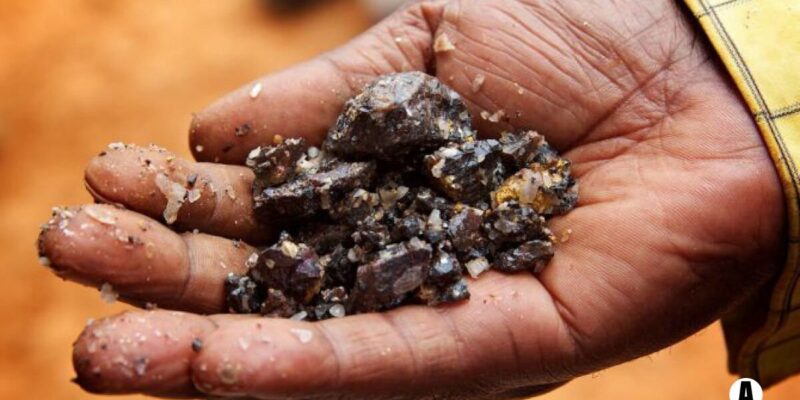New report exposes evils undermining responsible coltan mining in the DRC
In the DRC, a report released earlier this year by ENACT Africa, a European Union project to strengthen the fight against transnational organized crime in Africa, highlights some of the ills that hinder the responsible exploitation of coltan. Between State collusion with criminal networks, destruction of the historical heritage of local communities, exploitation of minors, rape and gender-based violence, around 4 billion dollars are lost each year by the State.
The ENACT report is notably the result of discussions held in the field with members of the Congolese Ministry of Mines, officials of the Certification, Expertise and Evaluation Center (CEEC), the Congolese Agency for environment and non-governmental organizations in North and South Kivu, among others. According to the findings reported, much of Congolese artisanal coltan production still escapes state control. A situation which would be intimately linked, we learn, to the presence of armed groups in the exploitation zones located in distant territories. This effectively prevents the supervisory authorities from accessing it to implement the regulations in force. This area of lawlessness would encourage child labor,
In areas where the government presence is clearly demonstrated, the ENACT report also denounces collaboration between the authorities responsible for regulating the activity and the criminal groups operating on the ground, through corruption. The case that best illustrates this situation remains that of the Assistance and Supervision Service for Artisanal and Small-Scale Mining (SAEMAPE), created in 2003 with the dual mission of controlling artisanal operations and developing the sector. However, ENACT says that nearly two decades later, the sector’s ills have worsened, as the state body is said to be more concerned with paying taxes owed by miners than anything else. Its civil servants, who often accumulate several months of unpaid salaries, find themselves “continually harassing miners to make them pay” or visiting mining sites too irregularly for their control missions to have any real impact. Added to this is the sale by officials of labels supposed to certify the production of coltan from legal mines to traders who use them to smuggle their bags of coltan containing production from illegal sites.
“A UN investigation has revealed that many counters knowingly buy coltan from areas controlled by armed groups and exploit the distinction between them and traders to claim ignorance of the origin of the mineral. International companies then transport the ore directly to the country of destination or re-export it via Uganda and Rwanda to processing facilities abroad,” said Oluwole Ojewale, the author of the report.
The State’s inability to monitor the sector ultimately results in the production of the areas in question not being counted in the official figures. The coltan thus produced is sold by traders via the countries of the sub-region. A situation which is not new since a 2013 study quoted in the report indicates that “the annual losses of the State linked to revenue leakages due to corruption and fraud” reach approximately 4 billion dollars.
These losses, which are as many profits generated for the illicit groups involved in the exploitation of coltan, would then allow the pursuit of activities, fueling a vicious circle.
International responsibility
Responsibility for controlling artisanal mining in the DRC lies primarily with local authorities. And the shortcomings mentioned above should not overshadow Kinshasa’s efforts in the fight against the illegal exploitation of its resources. In particular, we can point out the development over the past ten years of guiding principles aimed at creating a “conflict-free” mineral supply chain in the country, such as the International Tin Supply Chain initiative, launched in 2009 by the International Tin Association (ITA) and the International Center for the Study of Tantalum and Niobium (TIC). Nevertheless, the difficulties encountered persist and this can also be seen as the responsibility of several other actors outside the country.
“Industrialized nations such as the United States and countries in the Asia-Pacific region such as China, Japan and South Korea are the world’s main consumers of coltan which is used by large companies such as Apple, Samsung, Sony and other producers of high-end personal computers,” the report noted.
However, the world production of coltan estimated last year at 2,300 tons with a growth of 6% expected between 2021 and 2026, is dominated by the DRC. This position makes the country a special playground for all consumers who, to guarantee their supply, are often tempted to turn a blind eye to the origin of the ore purchased, at the risk of participating in the perpetuation of this illicit traffic.
Like what has been done for several years with cobalt, the reorganization of the artisanal mining of coltan can therefore only be a success with the involvement of these international customers who must support the Congolese government in its efforts. This notably involves, according to ENACT, the association of global coalitions to enable the development and implementation of a “national method of due diligence making it possible to trace coltan shipments to the source”.
![]()





